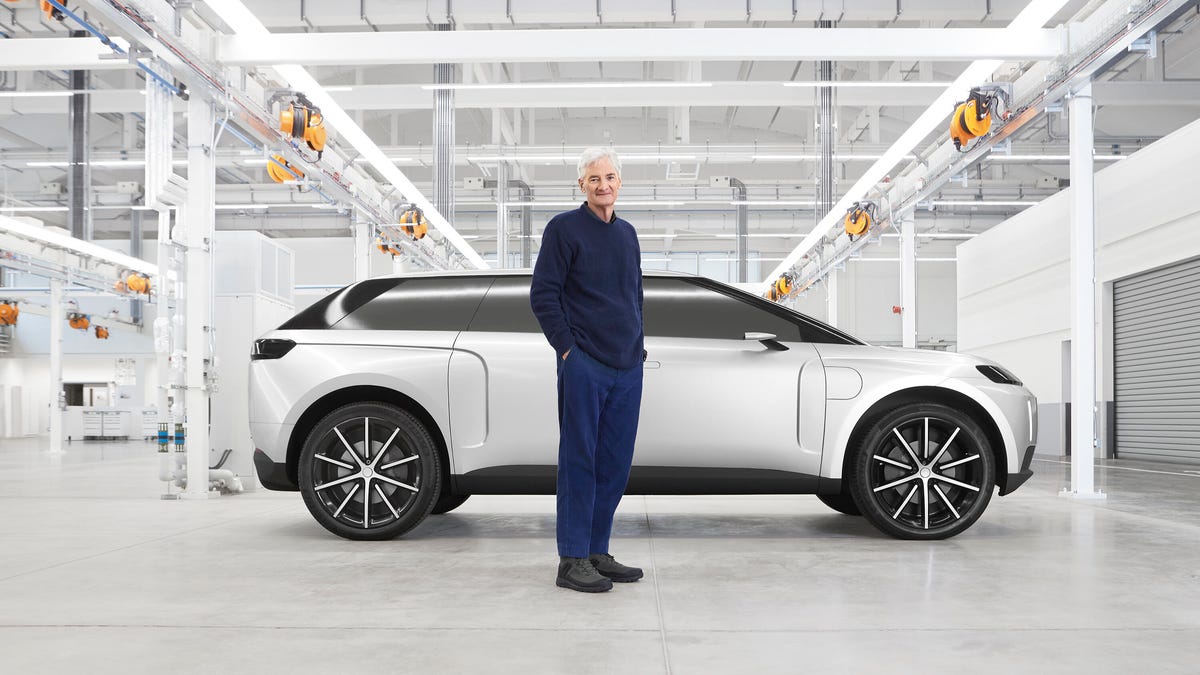Dyson electric car revealed inside and out, despite cancellation
Dyson canceled its EV after costs ballooned, but the company still decided to show off what it accomplished.
The car you see here will not make it to production. Yet the unnamed Dyson electric car has made a formal online debut despite its cancellation.
On Wednesday, the company best known for its bagless vacuum cleaners took us for a deep dive into the electric car and showed off its exterior design, the cockpit and spoke to the engineering bones that created the EV.
Dyson said this was designed from the ground up, with no parts sharing, and became a crown jewel of the company's development team. Engineers created a flexible platform to first build the unnamed SUV seen here. More vehicles were spoken of to ride on the same platform down the road.
Measuring about 16 feet long, the Dyson EV was a tad longer than, say, a Chevrolet Equinox . Designers pushed the wheels as far out as possible to give the EV a planted look, while big wheels were meant to lower rolling resistance. Overall, the design is a little ambiguous, but it's certainly not unattractive. The wheel flares provide some butch-like square lines and draw the eye into the head and taillights. Dyson also took the floating roof trend to the extreme with this project, but it looks mighty futuristic.
Inside, Sir James Dyson , the company's founder, issued designers and engineers a challenge. "I hate the 1930s armchair look that car seats typically have and I haven't yet found a car seat that has proper lumbar support," he said. "We wanted a more elegant, structural seat, with well-considered posture support."
As you can see, the Dyson EV sports some very comfy-looking seats that Dyson said provide support in all the right areas. We also learned the car was a three-row SUV with room for seven passengers. Every single control found a spot on the steering wheel and a head-up display projected onto the windshield to keep drivers' eyes on the road. Dyson's air purifying technology was also onboard.
What about the really important parts? Dyson did a ton of work there, too. The battery pack was created to become part of the body structure in an effort to minimize weight. The battery juiced a Dyson electric drive unit (an electric motor, a power inverter and a single-speed transmission), but Dyson future-proofed the entire powertrain. The battery pack's aluminum casing could fit numerous sizes and types of battery cells to make sure any battery advances could be implemented in a speedy fashion.
In a previous interview, Dyson said the powertrain likely would have made 536 horsepower and returned a range of 600 miles. Still, this was a hefty car weighing 5,730 pounds.
It's not really common for an automaker, or really any company, to point a spotlight on a canceled project. So why did Dyson decide to do so? A spokesperson told Roadshow it's a matter of celebrating the accomplishment.
"We felt it was right to show all that the amazing work that the team had done," they said. "It was obviously quite the undertaking and the team still feels extremely proud of what they accomplished." Dyson spent $600 million on the project before the company decided to halt development. The car would reportedly have required a price tag of $150,000 just to break even.
While the company also decided against selling the project, it still plans to remain active in the automotive space. "We're now focused on our battery technology and developing the work that our teams around the world are taking on, both in solid state and other battery technology," the spokesperson said.


